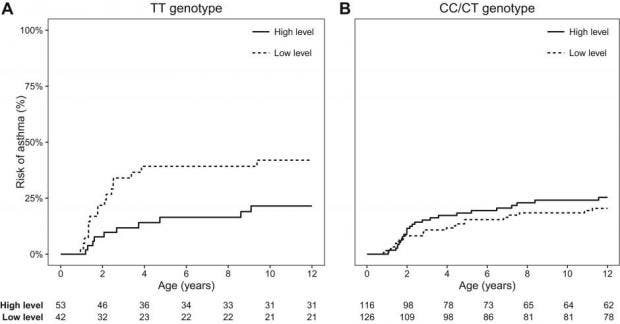Danish researchers have found evidence that having cats around newborns significantly reduces the risk of developing asthma. Delving deeper, the team at the Copenhagen Studies on Asthma in Childhood Research Center (COPSAC) found that the presence of cats keeps deactivated a gene that doubles the risk of a child developing asthma.
For the new study, the group of researchers studied data on 377 Danish children whose mothers have asthma. The team led by Hans Bisgaard, professor of pediatrics and the head of COPSAC, sequenced the genomes for each child and collected information about their upbringing and environment. With this in mind, not only were the parents surveyed, samples from their homes were also taken.
A variation in the 17q21 gene, called TT, is known to be heavily involved in whether or not a person develops asthma in early childhood. About one in three children carried the TT gene variant.
Surprisingly, cats removed the risks associated with the TT gene variant by keeping it shut down. To make things more interesting, dogs did not offer any kind of protection signaling there’s an environmental factor strictly associated with felines.
What’s more, the analysis found evidence indicating cats not only offer protection against asthma but also against pneumonia and inflammation, the authors reported in the Journal of Allergy and Clinical Immunology. Previously, in 2013, American researchers also found a positive association between cat ownership and reduced asthma incidence in young children up to 5 years of age.

Left-hand side image shows asthma development in children carrying the TT gene variant, as compared to other children who lack the variant. Solid line indicates levels of cat allergens in the house, which are associated with a lower risk of developing asthma. Credit: Journal of Allergy and Clinical Immunology.
Scientists don’t know what is it about cats that deactivates the TT gene variant but previous research carried out by the same COPSAC found cats can also activate the eczema gene. Win some, lose some.
Such findings go to show just how complex the development of allergies and asthma can be, featuring a tangled interplay between genes and the environment. It’s not clear at the moment how much exposure to cats children need for the asthma protection to kick in. This is something other studies meant to replicate the findings might answer.
Lead-author Jakob Stokholm says that bacteria that cats carry and perhaps fungi or viruses could be involved in the asthma protection effect. This may be important to investigate since once they can isolate the TT gene deactivating driver, scientists may then be able to develop treatments which don’t necessarily involve physically having a cat in the house. But, let’s face it, why wouldn’t you?
“This [research] is of course interesting to develop, because if we can explain these mechanisms, it opens up opportunities to isolate them and to protect against the disease,” Stokholm told The Local.










